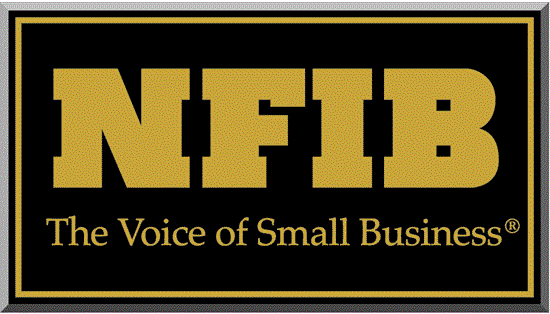The NFIB Research Center released its latest COVID-19 survey recently on how the pandemic has affected small businesses. This is the 18th survey in the series and included in this edition is an update on SBA small business programs, sales levels, staffing shortage, and more.
“This survey shows that small business owners here in Indiana aren’t out of the woods yet,” said Barbara Quandt, NFIB Senior State Director in Indiana. “The latest problem our small business owners are facing is supply chain disruptions. Add on the challenge job openings and trouble finding qualified workers to fill those positions, and it is clear that small business owners are still grappling with the COVID-19 pandemic.”
Key findings include:
Supply Chain Disruptions:
- Thirty-two percent of owners reported supply chain disruptions are having a significant impact on their business.
- Over half (54%) of owners reported that the supply chain disruption is having a worse impact on their small business than it was three months ago.
- Over half (62%) of owners anticipate the supply chain disruptions impacting their business to continue for five or more months.
Staffing Shortage:
- Twenty-two percent of small employers are currently experiencing a significant staffing shortage and another 18% are currently experiencing a moderate staffing shortage.
- Of those small employers currently experiencing a staffing shortage, 19% are experiencing a significant loss of sales opportunities, and 30%, a moderate loss of sales opportunities because of the shortage.
- Over half (67%) of small business owners reported that their current staffing shortage being about the same as it was one month ago.
Job Applications:
- About half (48%) of small employers are receiving fewer job applications now for their open positions than they did a month ago and 39% are receiving about the same.
Adjustments to Hiring Practices to Attract Employees:
- When asked what adjustments (beyond normal hiring practices) small employers have taken to attract applicants, 63% have increased wages.
- Thirteen percent have increased paid time off and another 13% have offered or enhanced hiring bonuses.
- Fifteen percent of owners have offered or enhanced referral bonuses and another 15% have offered or enhanced health insurance benefits.
Adjustments in Business Operations Due to Staffing Shortage:
- When asked what adjustments have been made in business operations to compensate for the staffing shortage, 41% reported offering more hours to part-time employees.
- Sixty percent are offering overtime to full-time employees.
- Seventy-nine percent of owners responded that owners are working more hours and 30% have adjusted business operation hours.
- Twenty-nine percent of owners have introduced new technology to enhance productivity and 24% have reduced the variety of goods and services sold.
Paycheck Protection Program (PPP):
- About three-quarters (77%) of respondents reported that they received a PPP loan in 2020 and 86% of owners have submitted a PPP loan forgiveness application for their 2020 loan.
- Forty-three percent of owners received a second PPP loan and only 20% applied for PPP loan forgiveness on their second PPP loan.
Employee Retention Tax Credit (ERTC):
- Nine percent of small employers have claimed the ERTC for wages in 2020 and 7% of owners claimed the ERTC for wages in 2021.
- Only 9% of owners are very familiar with the ERTC, 33% are somewhat familiar, and 58% of owners are not at all familiar with the ERTC.
Economic Injury Disaster Loan (EIDL):
- About a quarter (26%) of owners applied for and received an EIDL.
Family Leave Tax Credit (FFCRA):
- 15% of respondents claimed the federal COVID-19 sick and family leave tax credit.
Restaurant Revitalization Fund (RRF):
- Forty-one percent of owners in the restaurant industry applied for an RRF grant and of those who applied, 56% received grant funds.
Sales levels:
- Sales levels are 50% or less than they were pre-crisis levels for 16% of small businesses with another 21% at sales levels of 51% – 75% of pre-crisis levels.
- Thirty-six percent are back or nearly back to where they were with sales between 76% – 100% of pre-crisis levels.
- About one-in-four (26%) are exceeding pre-crisis levels.
Business Conditions:
- Twenty-two percent of owners report that conditions are back to normal now with another 27% of owners anticipate it taking until the second half of 2021 and 22% anticipate sometime in the first half of 2022 before economic conditions return to pre-crisis levels.
- Seventeen percent of owners expect conditions not to fully improve until the second half of 2022 and 13% after 2023.
Business Operations:
- About three-fourths (73%) of small business owners report they will be able to operate for more than a year in current economic conditions.
- Twelve percent reported that they will only be able to continue business operations for six months or less under current economic conditions and another 15% for 7-12 months.
Fraudulent unemployment insurance claims:
- Twenty-nine percent of owners have had a fraudulent unemployment insurance claim filed against their business.
Vaccines:
- Almost one-in-five (19%) of small employers are asking employees if they are vaccinated.
This publication marks NFIB’s 18th Small Business COVID-19 survey assessing the health crisis impact on small business operations, economic conditions, and utilization of the targeted small business loan programs.






